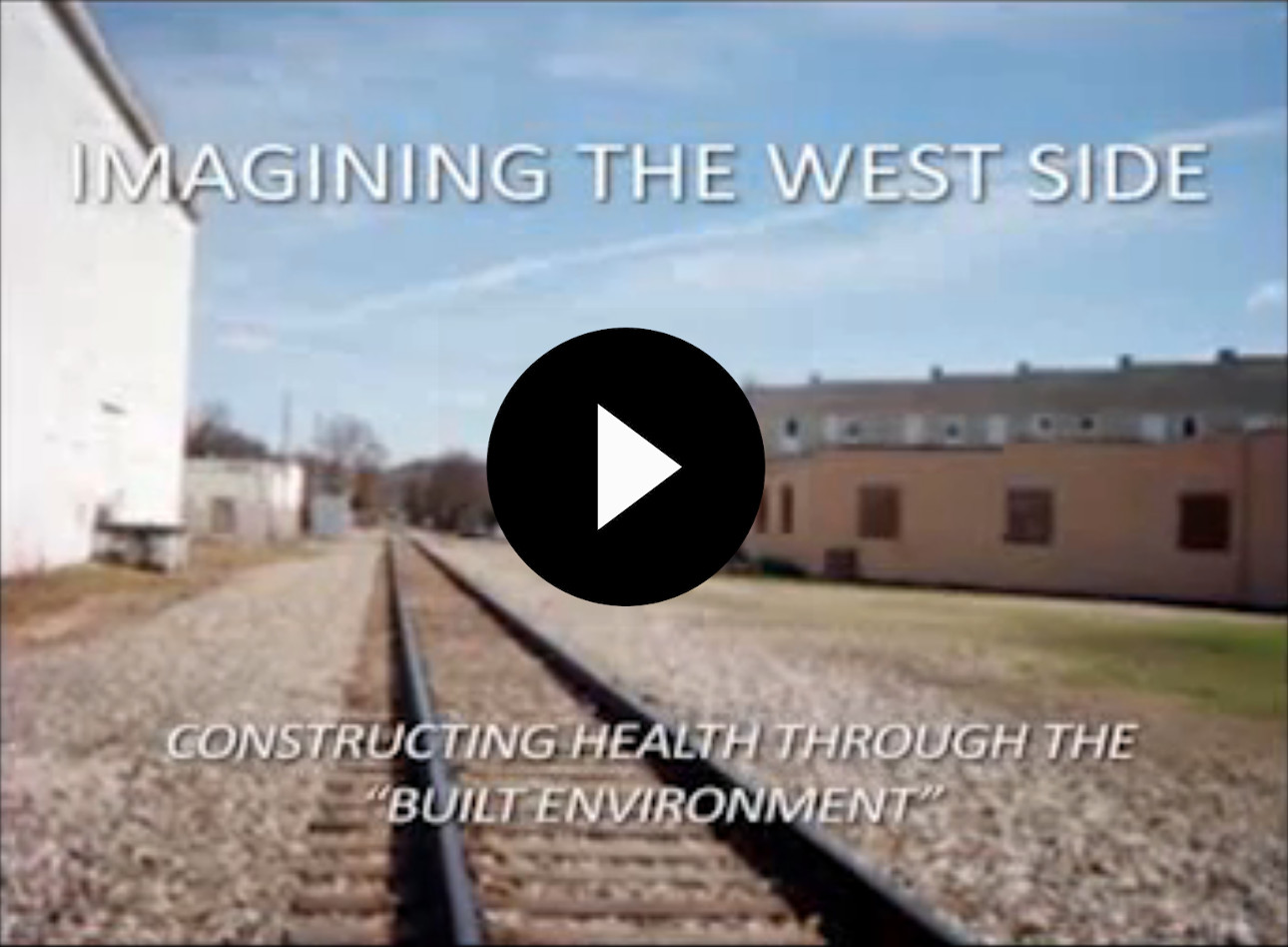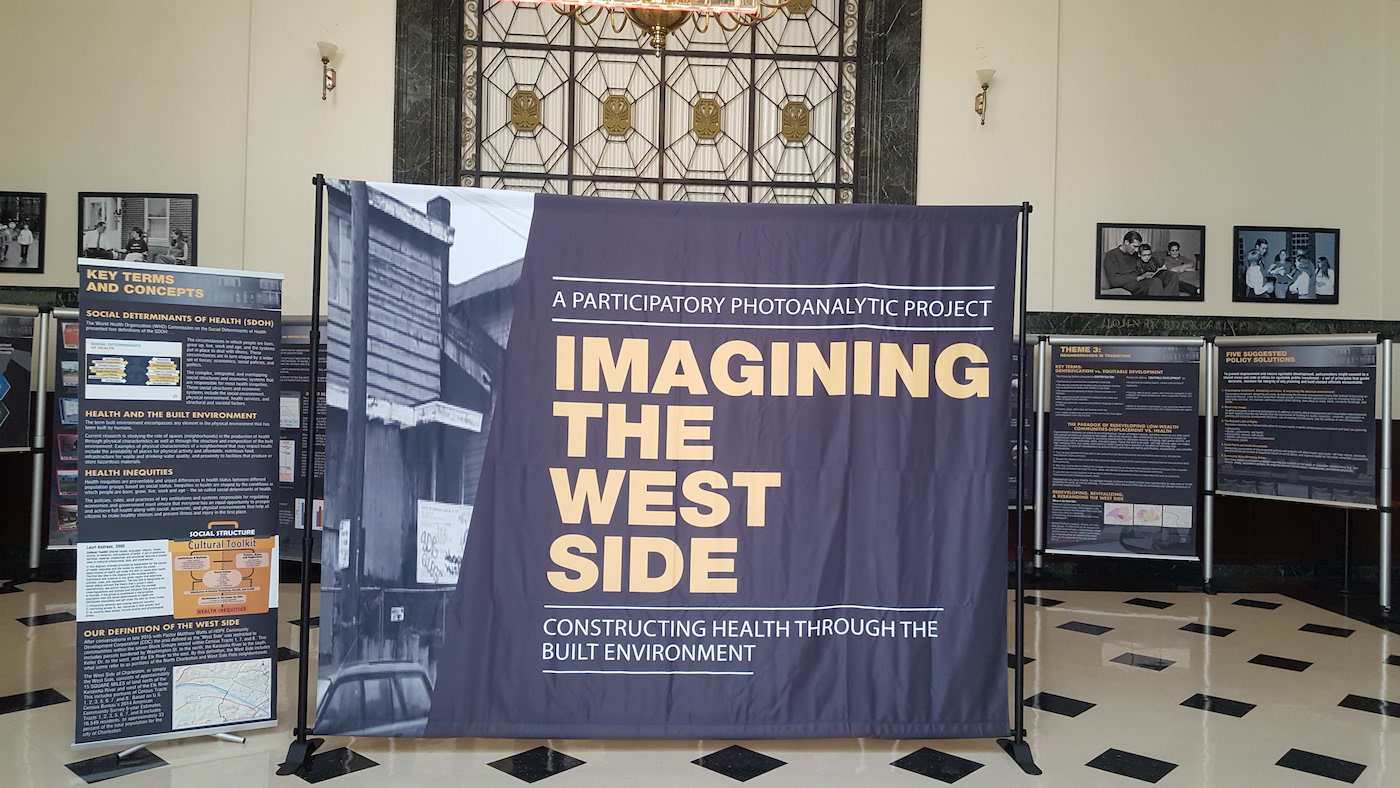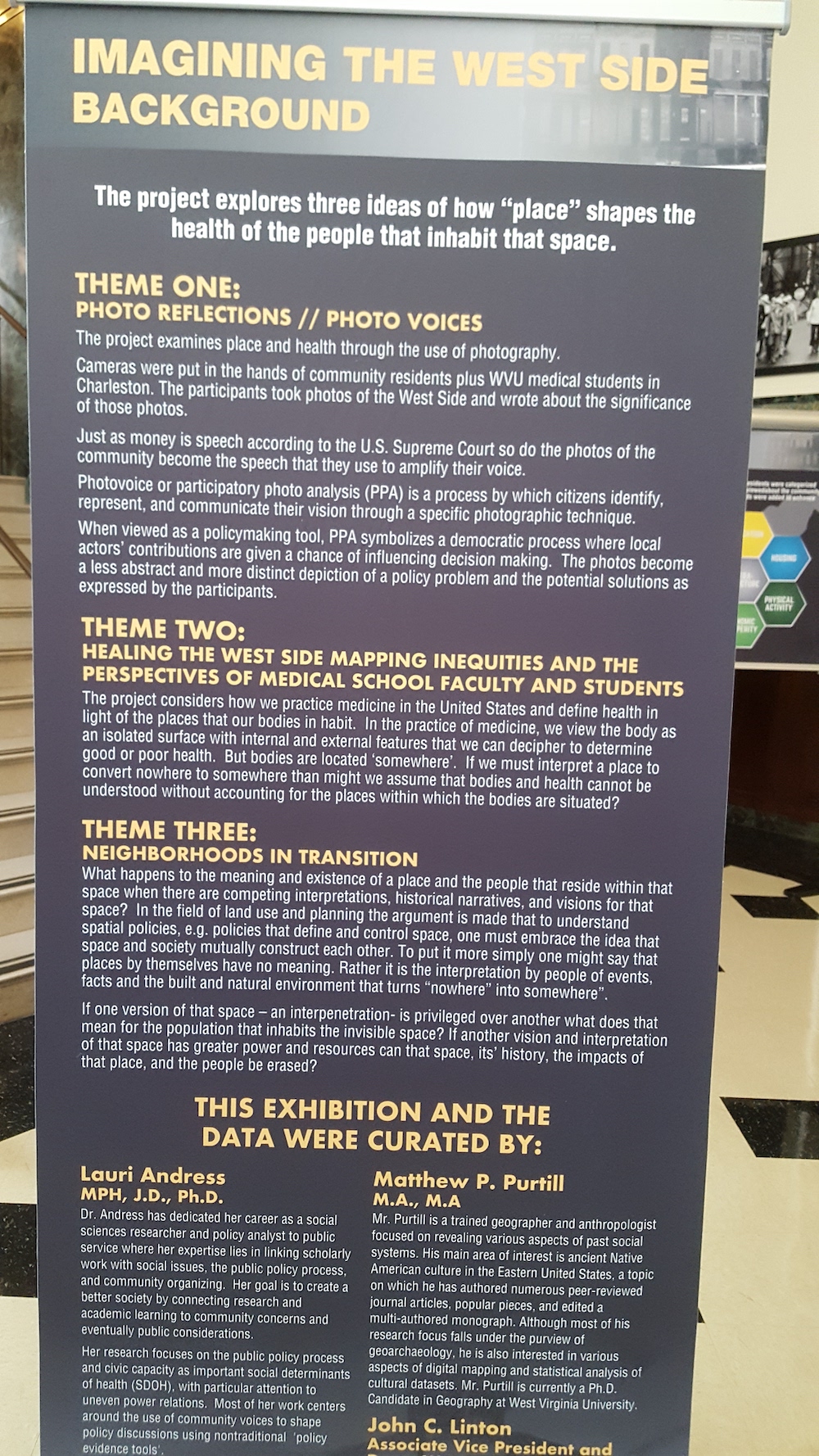The Built Environment
& Healthcare Practitioners
Pilot One: Community Voices & Lived Experiences
Imagining the West Side
Starting in 2016 this project explored three themes to examine how “place” shapes the health of the people that inhabit that space. In the field of human geography the argument is made that to understand places and spatial policies, e.g. policies that define and control space, one must embrace the idea that space and society mutually construct each other. To put it more simply one might say that places by themselves have no meaning. Rather it is the interpretation by people of events, facts, social processes, and the built and natural environment that turns “nowhere” into somewhere.
THEME ONE: The project examined place and health through the use of a community-based participatory photo-voice project. Just as money is speech so do the photos of the community become the speech that they use to amplify their voice. Photovoice is a process by which groups identify, represent, and communicate their vision through a specific photographic technique. The project put cameras in the hands of community residents plus WVU medical students in Charleston. The participants took photos of the West Side and wrote about the significance of those photos.
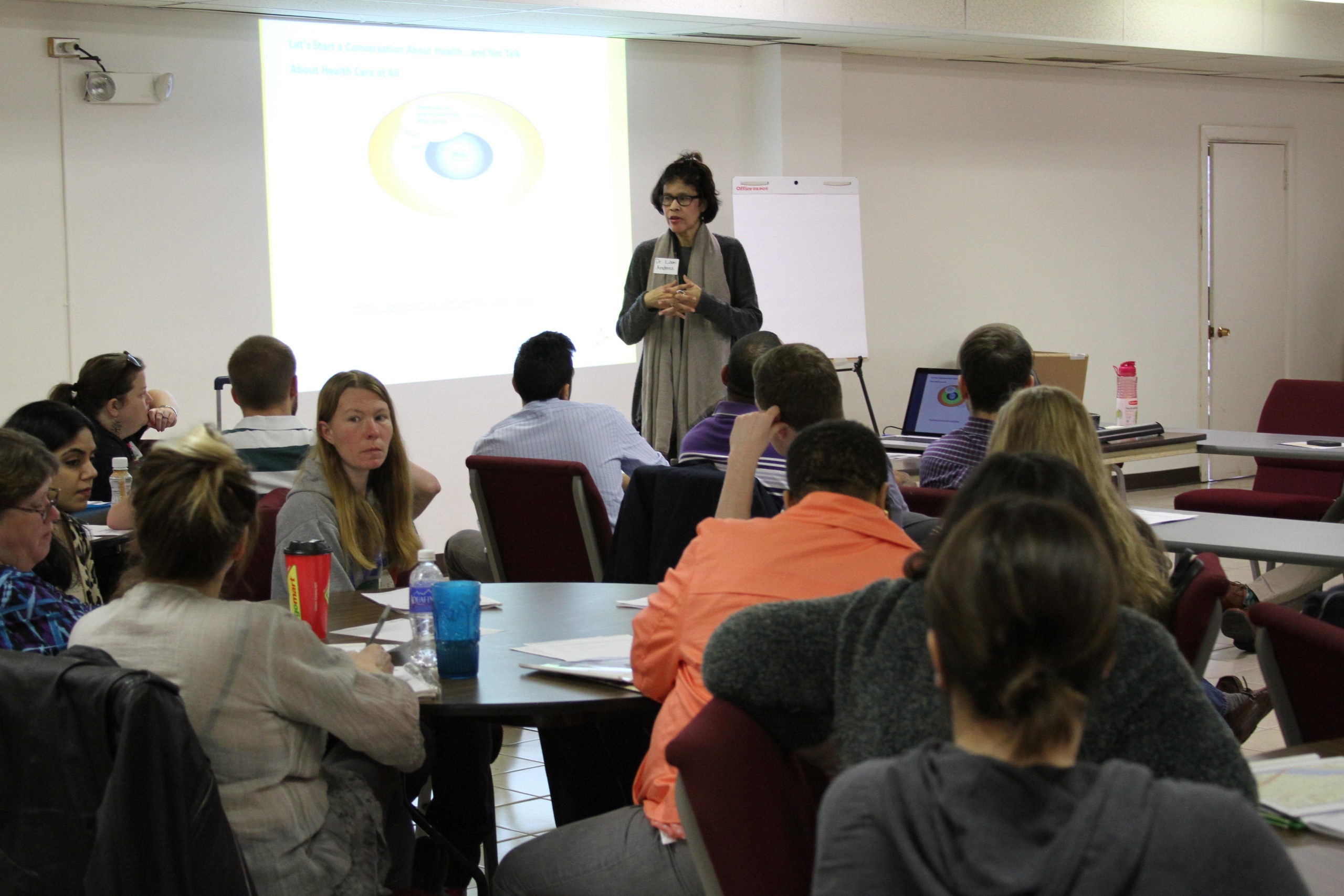
Dr. Andress speaks on the social determinants of health (SDOH) to WVU Charleston Medical Students and community members of the West Side.
As a practice rooted in the production of knowledge, photovoice is thought to enable at least three outcomes (1) Helps people to record and reflect their community’s strengths and concerns, (2) Promotes critical dialogue and knowledge about important issues, and (3) Facilitates communication with decision makers using a different tool.
When viewed as a policymaking tool, photovoice symbolizes a democratic process where local actors’ contributions are given a chance of influencing decision making. The photos become a less abstract and more distinct depiction of a policy problem and the potential solutions as expressed by the participants.
THEME TWO: The project examined how medicine is practiced in the U. S. and defines health in light of the places that our bodies in habit. In the practice of medicine, we view the body as an isolated surface with internal and external features that we can decipher to determine good or poor health. But bodies are located ‘somewhere’, if we must interpret a place to convert nowhere to somewhere than might we assume that bodies and health cannot be understood without accounting for the places within which the bodies are situated? For more on this idea see Andress and Purtill (2020) Shifting the gaze of the physician from the body to the body in a place: A qualitative analysis of a community-based photovoice approach to teaching place-health concepts to medical students.
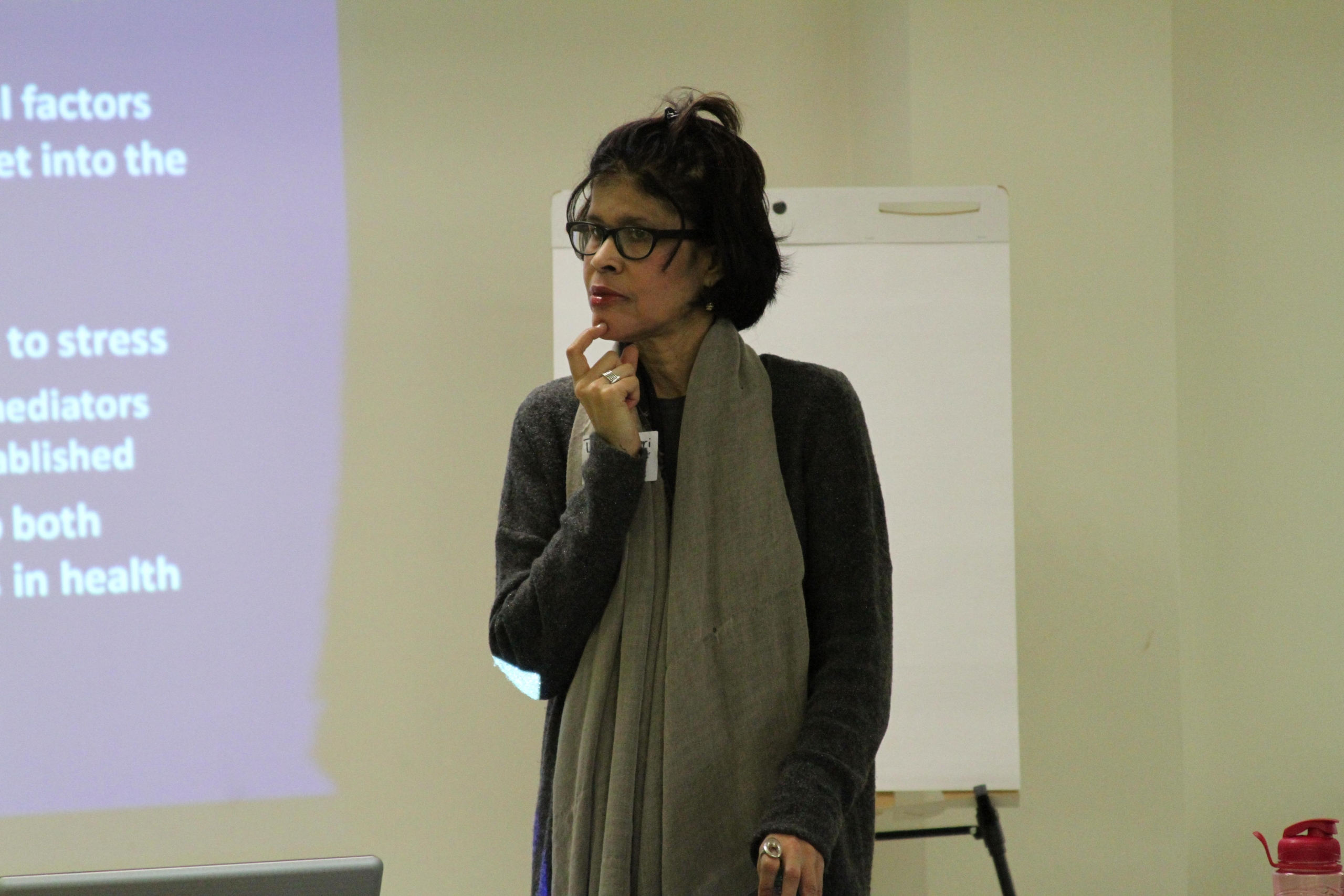
Dr. Andress speaks on the social determinants of health (SDOH) to WVU Charleston Medical Students and community members of the West Side.
THEME THREE: This project explored the question of what happens to the meaning and existence of a place and the people that reside within that space when there are competing interpretations, historical narratives, and visions for that space? If one version of that space – an interpenetration- is privileged over another what does that mean for the population that inhabits the invisible space? If another vision and interpretation of that space has greater power and resources can that space, its’ history, the impacts of that place, and the people be erased?
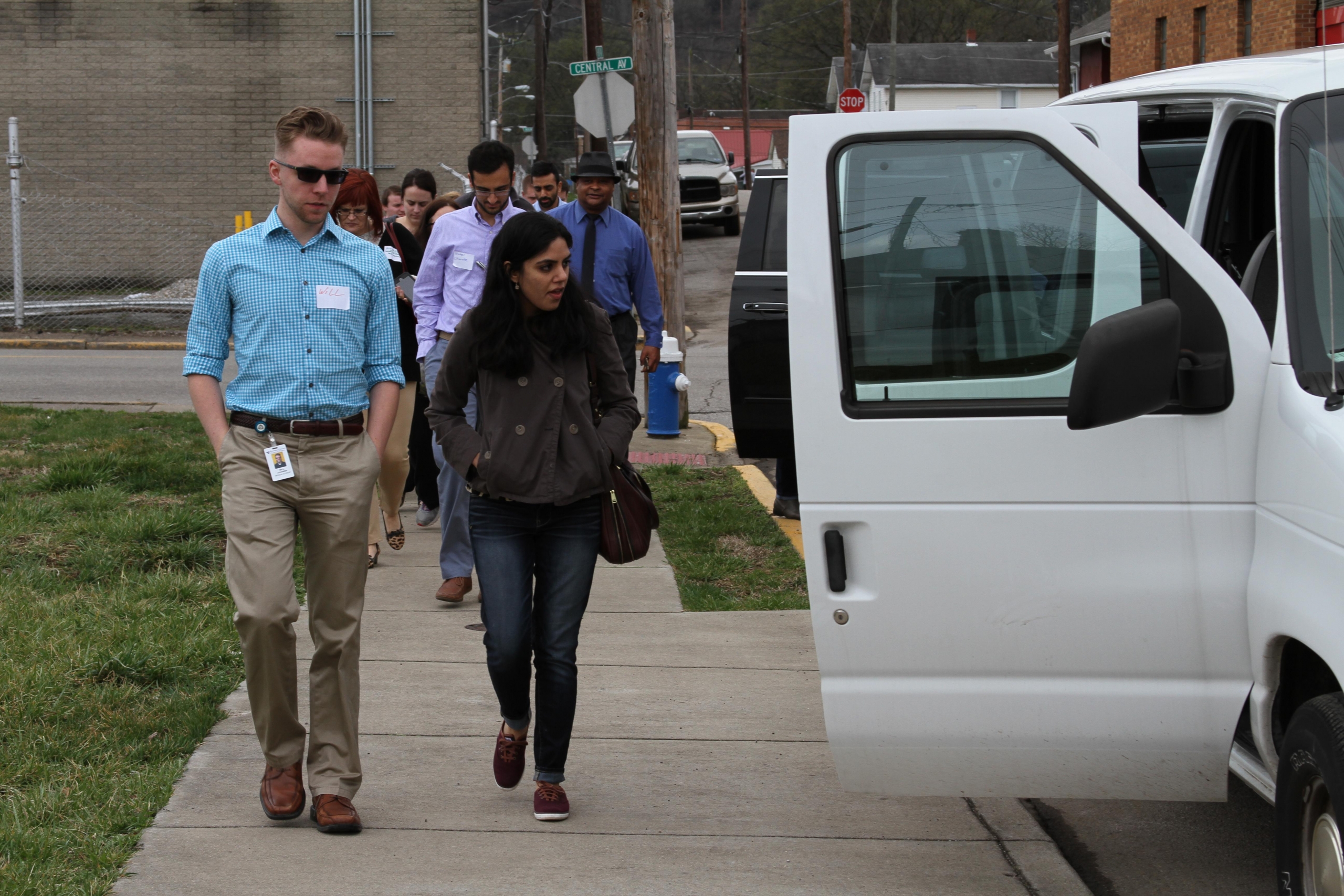
WVU Charleston Medical students touring the West Side community with Pastor Matthew Watts
Click on the names of WVU Medical students and faculty below to see their photos and narratives describing the West Side of Charleston where many of their patient’s reside.
- Stephen Dewesse
- Sarah Lively
- Kathleen Bors
- Will Johansen
- Joe – Ashray Maniar
- Amita Rajani
- Tyler Holliday
Following this is a video that captures the ideas and views of community members, community development experts, and medical students and faculty that lived or worked on the West Side of Charleston.
Video: Imaging the West Side
This project put cameras in the hands of community residents plus WVU medical students in Charleston. The participants took photos of the West Side and wrote about the significance of those photos.
Exhibitions Supplementary Material: Constructing Health through the Built Environment
Photo Voice Exhibition: Imagining the West Side
The set of slides depict the exhibition that was presented in two shows at west Virginia University and again in Charleston.
